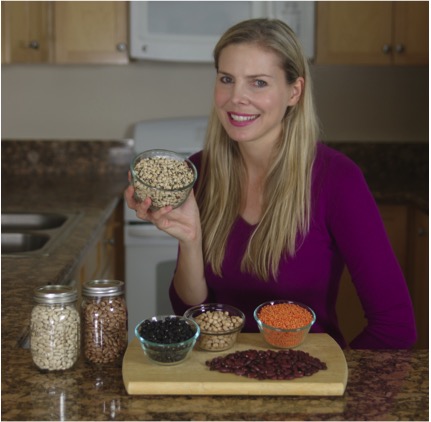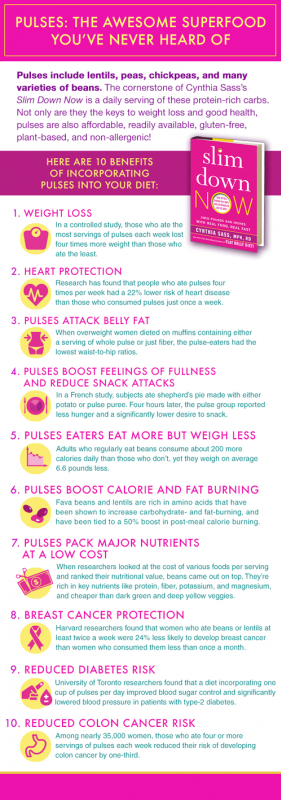I have to admit that even as a seasoned nutrition professional I primarily associated the term pulse with heart function. But one morning, while reading about an impressive study that involved asking volunteers to add pulses (beans, lentils, chickpeas and peas) to their diets, I was reminded of their culinary significance.
The study found that, compared to those who cut 500 daily calories, those who ADDED a daily serving of pulses had similar weight loss results, but experienced better improvements in cholesterol and blood sugar levels. Practically each week thereafter more new research and trend reports about pulses kept popping up, and I knew they would soon emerge as the next big superfood. That’s precisely why I was thrilled, but not at all surprised, to learn that the United Nations designated 2016 as the International Year of Pulses (IYP).
 Pulses are remarkable for a number of reasons. Numerous studies demonstrate the ability of pulses to support weight loss and lower the risk of type 2 diabetes, heart disease, and certain cancers. On the weight loss front, pulses have been shown to boost fullness and satiety, up calorie and fat burning, reduce belly fat, and curb cravings for processed snacks. Eating more pulses has also been shown to improve overall nutrition quality, as pulses are chock-full of vitamins and minerals, in addition to plant-based protein, fiber, and antioxidant levels that rival berries. They also happen to be gluten-free, and they’re not a common allergen, so they can serve as nutritionally dense replacements for foods many people need to eliminate due to allergies and intolerances. And with more and more people moving towards plant-based diets, even part-time, they’re a prime alternative to animal-based proteins.
Pulses are remarkable for a number of reasons. Numerous studies demonstrate the ability of pulses to support weight loss and lower the risk of type 2 diabetes, heart disease, and certain cancers. On the weight loss front, pulses have been shown to boost fullness and satiety, up calorie and fat burning, reduce belly fat, and curb cravings for processed snacks. Eating more pulses has also been shown to improve overall nutrition quality, as pulses are chock-full of vitamins and minerals, in addition to plant-based protein, fiber, and antioxidant levels that rival berries. They also happen to be gluten-free, and they’re not a common allergen, so they can serve as nutritionally dense replacements for foods many people need to eliminate due to allergies and intolerances. And with more and more people moving towards plant-based diets, even part-time, they’re a prime alternative to animal-based proteins.
As if all of that isn’t enough, pulses are also environmentally friendly, readily available, extremely versatile, delicious, and affordable. In addition to being drought-friendly (pulses use just 1/10th the water of other proteins), and frost-hardy, pulses enrich the soil where they grow, which reduces the need for chemical fertilizers. In fact, pulses can boast the lowest carbon footprint of any food group, and the cost per serving is just $0.10, compared to $0.63 for chicken, $0.73 for pork, and $1.49 for beef.
As a food lover I’m also blown away by the culinary versatility of pulses. For all of the reasons above, I included a daily serving of pulses in the eating plan in my newest book Slim Down Now: Shed Pounds and Inches with Real Food, Real Fast. I also personally created all 100+ recipes in the book, and had a blast incorporating pulses into a wide range of dishes, from stir frys, hearty soups, veggie lasagnas, salads, and dips to puddings, smoothies, pumpkin bread, popsicles, brownies, and dark chocolate truffles. I can’t think of another food group that could possibly be incorporated into such a wide array of recipes – the possibilities are endless. And with every bite you’ll be improving your health, and the health of the plant.
By Cynthia Sass (MPH, MA, RD, CSSD); One of America’s leading nutrition and health experts

